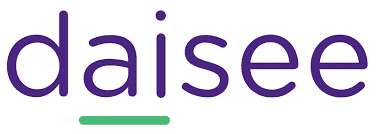Top-10 AI Startups in Australia and New Zealand
Table of contents

There are 24.13 million Aussies and 4.693 million Kiwis that live on isolated islands in close proximity to one another. These close neighbors don’t shy away from friendly competition, taking it seriously when the other side wins in rugby, cricket, or sheep raised per capita, and enjoying the banter that follows. The two countries have a lot in common though. Their relative distance from the rest of the world, their beautiful natural sights, and their laid-back inhabitants have made the two countries a paradise destination for travelers. But this is not the only thing the two economies are banking on.
Australia and New Zealand may be far from the rest of the world, but they don’t plan on letting the tech startup revolution pass them by. Tech investment has grown from $32 million to $96 million between 2011 and 2016 and the Australian government has allocated $30 million over four years to strengthen Australia’s artificial intelligence capabilities. New Zealand is lagging behind in terms of commitment, but adoption of AI applications by businesses is on the rise. Here are the top ten most funded AI startups in Australia and New Zealand according to Crunchbase.

Let’s take a cursory look at each of these AI startups.
Hyper Anna
Founded in 2016, Sydney startup Hyper Anna has raised $13.6 million in funding from the likes of Sequoia Capital to develop an AI-powered data analyst. The company calls the tool a “Siri for analytics” which sits on top of corporate databases answering business analytics questions using natural language. Anna is specialized in time series analysis and responds to users’ questions by understanding their context, according to the founder of the company who says it’s smarter than IBM’s Watson.

Current business intelligence systems provide descriptive information rather than meaningful insights, and you need to hire a data scientist for $114,520 a year to do what Anna does at the fraction of the price. The tool has won innovation awards from KPMG and Accenture in 2017 and 2018 respectively, and is already deployed in a number of Australian financial institutions.
Update 10/08/2018: Our next startup is one that we took a stab at describing which didn’t accurately portray the company – at least that’s what the Chairman and CEO, Mark Bradley, let us know in so many words. He kindly volunteered to do the write-up for us, and did a cracking job at it. We’re going to include it verbatim for your enjoyment – and hope that someday he’ll consider writing for us.
Semantic Software


Now in partnering discussions with Microsoft, Amazon and another unnamed US software giant, the Company survived a set-back when two disgruntled shareholders unsuccessfully launched litigation claiming their shares were worthless. The Company has received a US$246 million valuation for their patent portfolio alone, and now has seven times as many US patents issued. Life’s tough for startups down under it seems. The Company is in the process of migrating to the US.
Soul Machines

Modeled using real people and powered by IBM’s Watson AI platform, Soul Machines’ avatars are used as customer service representatives and chatbots. The company’s first creation was a virtual baby used to test human interaction loops. Since then, Soul Machines’ avatars have been gaining traction with public and private institutions like the Australian National Disability Insurance Scheme, NatWest Bank, and Daimler Financial Services who have all signed up for the service.
Update 01/08/2020: Soul Machines has raised $40 million in Series B funding to continue expanding globally with a specific focus on R&D. This brings the company’s total funding to $47.5 million to date.
Daisee

chatbot conversational AI solutions.
PredictiveHire
Founded in 2013, Melbourne startup PredictiveHire has raised $5.3 million in funding to develop an AI-based recruitment application. Hiring using AI is the next big thing, promising to get rid of the necessary evil of HR and doing the job much more effectively too. (Last year we wrote an entire article about PredictiveHire’s algorithmic approach). Job candidates fill out a 10-minute questionnaire that includes a survey and some free text questions, which is then checked by the AI algorithm looking for behavioral patterns to find out if the candidate is right for the job.
Key indicators under scrutiny include culture fit, sales and customer service performance, and tenure, and the platform allows hiring managers to create custom indicators tailored to a position as well. Used by a diverse set of companies in recruitment, insurance, and fashion, the platform boasts a minimum predictive accuracy of 75%.
APE Mobile

Oovvuu
Founded in 2014, Sydney startup Oovvuu has raised $3.8 million to develop a video embedding platform that uses AI algorithms to match and embed the right videos into articles for any given topic. The concept is based on the type of semantic algorithms which we discussed earlier, and generates advertising revenue for broadcasters and publishers subscribing to the service. IBM estimates the global video market will be worth $105 billion by 2019, and they’ve partnered with Oovvuu who uses IBM Watson to power their embedding algorithms. Oovvuu offers its services under a revenue-sharing model which de-risks implementation and allows companies of any size to subscribe in hopes of boosting ad revenues. The team now has a video catalogue worth more than $200 million, and it’s distributed to 50 global publishers including corporations like News Corp, BBC, and Al Jazeera.
Maxwell Plus

Maxwell Plus is also working on an app for individuals that will be able to schedule test appointments and make sense of peoples’ health test outputs. This app focuses on preventive health measures, and the company is accepting volunteers for its testing phase right now. In addition, Maxwell Plus has recently received a $790,000 government grant to develop an Alzheimers’ diagnostic tool using their AI platform in partnership with Australian radiology and healthcare research specialists.
Flurosat

The company promises real results with 10-25% higher crop yields, 30% less fertilizer used, and 25% less water used. All farmers need to do is run an implementation project using real tissue samples once, and after that, the analytics platform goes live providing insights around the clock. Flurosat doesn’t publish its prices on the website, but we’d bet it’s less than hiring an agronomist at $62,912 per year.
Metigy

Update 11/23/2020: Metigy has raised $14.6 million in Series B funding to grow their international customer base. This brings the company’s total funding to $18.7 million to date.
Conclusion
Collectively, these AI startups have taken in less than $60 million in funding. That’s a drop in the bucket when you consider how normal it’s become to see a $100 million round invested in a single company (Softbank is partially to blame for that.) Maybe one reason for this is that these companies likely struggle with getting exposure to international investors given the ethnocentric lens that investors will often look at investments through. Since it’s probably an uphill battle to begin with, we’re glad we can shed some light on the scene.
Sign up to our newsletter to get more of our great research delivered straight to your inbox!
Nanalyze Weekly includes useful insights written by our team of underpaid MBAs, research on new disruptive technology stocks flying under the radar, and summaries of our recent research. Always 100% free.
















